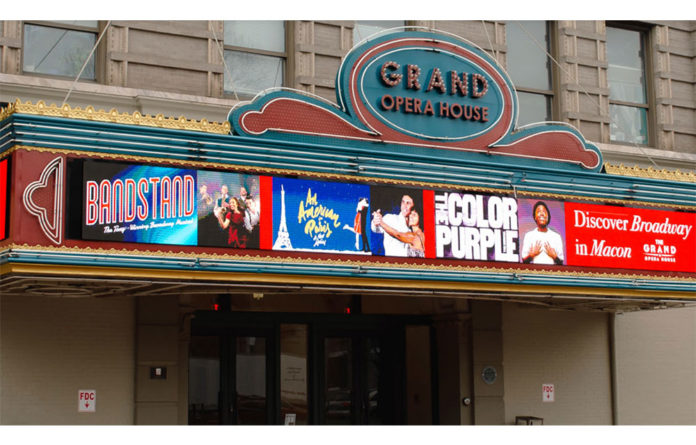According to prior market research, digital signage is expected to grow at a Compound Annual Growth Rate (CAGR) of 11.6 percent from 2021 to 2026. The coming year puts us smack-dab in the middle of that forecast.
Some factors cited driving this growth and acceptance include an increase in commercial applications, ongoing technological advances with displays, and interest in 4K (and even 8K potential).
Sign Builder Illustrated spoke with Deacon Wardlow, continuous improvement manager at Vantage LED in Ontario, California, to get his viewpoints on where sign shops should expect the digital signage market to be headed in 2023 when it comes to communities and cityscapes.
Education. Wardlow mentions that one of this year’s big stories continuing into 2023 is education versus marketing push. “Marketing push creates demand, but a push without education creates problems,” he says.
One problematic example he cites of this is in the area of tighter pixel pitch that the market has shifted toward over the last two years—more specifically, is more always better?
“This year, a big focus on interior high-resolution systems is present, and the impression given to the market is that tighter pixel pitch is a ‘new technology’ and a better way to go,” explains Wardlow, noting that a recent planning committee meeting in Orlando discussed recommending 6mm as the “standard LED pixel pitch required for all displays in the city.”
Wardlow says that pixel pitch is ideally determined based on a number of factors.
“The simplest method of the ideal pixel pitch is average viewing distance divided by ten,” he explains. “Display size and content can come into play. Typically a tight pixel pitch (like 6mm) is only recommended with a large number of pedestrian traffic viewers and close viewing (like an open-air shopping plaza or location where traffic is within sixty feet of the display and holding due to traffic signal or other holds that increase viewing time).
“The impression a single tighter pitch is always the solution leads to misunderstandings and buyers getting a high-definition display that costs them more money, but not getting the full benefit of that higher resolution.”
Adoption. Wardlow feels that we are likely sliding hard into a recession, which means that people will be tighter with spending. But he doesn’t believe that signage will take a hit, as businesses need to stand out even more than before.
“Digital helps organizations communicate directly with the market and showcase their unique selling points,” he says. “Increasingly, convenience stores will be including ‘fresh meal options,’ quick-service restaurants will have smaller footprints with a focus on drive-thru, and businesses will be focusing on quality/value presentation. All of this is served by digital signage—but people overlook the flow of a digital program.
“An outdoor LED is the calling point to get people’s attention; interior HD digital is the ‘closer,’ hitting on value and primary sales targets. There’s an increasing trend in the market to personalize, and when a company can deliver a comprehensive, planned program that allows for more engagement (and personalization showcasing the organization), they’ll better meet the needs of the market.”
Another discussion you will probably see more in 2023 is the use of digital signage as art versus business. “Why can’t they be both?” asks Wardlow.
Systems. Wardlow says that a shift in technology will be long-term, as LED has gone from DIP (Dual In-line Packaged, a.k.a. “oval” LEDs) to SMD (Surface Mount Diodes) to COB (Chip on Board). “Laser and other digital options will start to take a forefront position with this technology,” he states.
In the short term, Wardlow believes that the details of a system will become more important to end-users.
“In a market that appears to be increasingly commoditized, there are big differences in manufacturing, materials, and support/development,” he says. “These differences aren’t immediately apparent with many displays. A high-resolution display looks beautiful when it first goes up. The better materials, manufacturing, and build show out over time.
“This makes a difference between a very satisfied long-term customer with a display that looks great over several years versus a one-shot client who’ll be spreading the word on a poorly performing system that failed to operate well after a couple of years.”
—By Jeff Wooten











